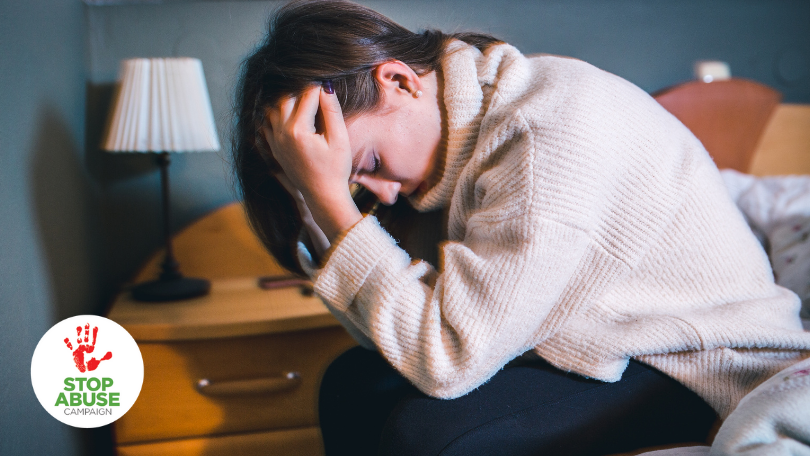According to the World Health Organization (WHO), “depression is a common illness worldwide, with an estimated 3.8% of the population affected…[that’s] approximately 280 million people.” If you struggle with depression, you are not alone, and rest assured that tremendous progress in understanding, diagnosing, and treating this crippling illness is ongoing.
Please understand that depression is a severe condition. The following information should be used for informational purposes only and is not intended to substitute or replace professional medical advice, diagnosis, or treatment.
What is depression?
Depression is more than feeling blue, having a bad day, or getting frustrated because everything seems to be going wrong. According to the Mayo Clinic, “depression is a mood disorder that causes a persistent feeling of sadness and loss of interest…it affects how you feel, think, and behave, and can lead to a variety of emotional and physical problems.”
Depression symptoms and signs
Life can get complicated and challenging. So, how to know if you have depression? If you experience any of the following symptoms for an extended period (two weeks or more), or if you have any thoughts of suicide or self-harm, you should seek medical attention immediately. Depression is not something to ignore or brush off. There is help.
Mayo Clinic reports the following most common symptoms and signs of depression:
- Feelings of sadness, tearfulness, emptiness, or hopelessness,
- Angry outbursts, irritability or frustration, even over small matters,
- Sleep disturbances, including insomnia or sleeping too much,
- Anxiety, agitation, or restlessness,
- Feelings of worthlessness or guilt and fixating on past failures or self-blame.
Children and teens may also experience depression, exhibiting many of the above signs. However, younger children may become clingier or refuse to go to school, while teens may become super-sensitive or experiment with drugs or alcohol.
What does depression feel like?
To say what depression “feels” like for you is impossible. Our feelings and emotions are vast and complicated, influenced by our life experiences (both the joyous and the traumatic), our relationships, and the environment in which we live. These elements shape our perception of the world and influence how we feel.
When we are overwhelmed by life, we seek reprieve from the frustration, guilt, and pain of reality (or what we’ve come to believe as reality). Have you ever felt like the stresses of the world are too much? Do you struggle to find hope as negative thoughts flood your mind? Do you walk around in a lethargic state of confusion because sleep eludes you? Or maybe you eat your problems—anything to fill the emptiness inside.
You don’t have to continue living with these destructive feelings. There’s help.
What causes depression?
According to the WHO, “the causes of depression include complex interactions between social, psychological, and biological factors.” This encompasses lifestyle choices, family relationships and practices, our physical environment, attitudes and beliefs, and genetic factors that affect our mental and physical health.
Individuals who experience or witness adverse childhood experiences (ACEs) such as domestic violence, parental separation/divorce, or childhood neglect or abuse can face long-term consequences, predisposed to developing mental health conditions like depression, anxiety, and post-traumatic stress disorder. Research also suggests that “exposure to ACEs is associated with an increased risk of depressive symptoms up to decades after their occurrence.”
Depression types
There are several types of depression. We are going to focus on the three most common forms.
Clinical Depression (AKA Major Depressive Disorder)
According to the Mayo Clinic, clinical depression is a “mental health disorder characterized by persistently depressed mood or loss of interest in activities, causing significant impairment in daily life.”
This may leave you in a constant state of sadness that you can’t shake or cause you to struggle with everyday activities, such as getting out of bed, going to work, or playing with your kids. Even the simplest things become too much to bear.
Manic Depression (AKA Bipolar Disorder)
Mayo Clinic defines manic depression is a “disorder associated with episodes of mood swings ranging from depressive lows to manic highs.”
This may feel like a roller coaster of unpredictable emotions, experiencing extreme highs and severe lows that may last for days or months. During the highs, you may feel super-productive and invincible. But when you crash, it’s devastating, leaving you exhausted and fighting thoughts of hopelessness and, in worse cases, suicide.
High Functioning Depression (AKA Dysthymia or Persistent Depressive Disorder)
According to the Mayo Clinic, high functioning depression is a “mild but long-term form of depression…defined as a low mood occurring for at least two years, along with at least two other symptoms of depression.”
Some people may not experience the debilitating sadness of major depression or the swings of manic depression, but they still struggle with feelings of hopelessness, despair, or guilt every day. This may be depression. If you feel you have to mask your true feelings or “put on a show” for other people, you may want to talk with your doctor.
Depression therapy and treatments
Through lifestyle changes, counseling, psychotherapy, or medications, there is hope that we can negate or reduce the effects and get out of depression. Depression treatment options depend on the individual’s symptoms and the severity of their depression. We will cover some of the most common treatments.
Depression therapy
Two of the most common forms of depression therapy include cognitive-behavior therapy and psychotherapy.
Per APA, Cognitive-Behavior Therapy is a treatment that usually involves efforts to change thinking and behavioral patterns:
- Learning to recognize one’s distortions in thinking that create problems and then re-evaluate them in light of reality,
- Using problem-solving skills to cope with difficult situations,
- Facing one’s fears instead of avoiding them,
- Learning to calm one’s mind and relax one’s body.
Psychotherapy involves communication tactics intended to help people:
- Find relief from emotional distress by becoming less anxious, fearful, or depressed,
- Seek solutions to problems in their lives, such as dealing with disappointment, grief, family issues, and job or career dissatisfaction,
- Modify ways of thinking and acting that prevent them from working productively and enjoying personal relationships.
Natural treatments
- Challenge Negative Thoughts. Taking the time to recognize and understand our thought patterns—why we think or believe what we do—allows us to reduce stress and anxiety, build confidence to make healthy choices, and identify our triggers to establish appropriate coping mechanisms when dealing with negative thoughts and emotions.
- Exercise Regularly. Outside if possible. Moving our body can support nerve growth and release “feel-good” chemicals called endorphins that encourage improved moods.
- Avoid Alcohol and Drug Use. Alcohol and drug use can intensify the feelings associated with depression. Avoiding mood-altering substances allows us to remain in greater control of our feelings and emotions.
- Get Enough Rest. Sleep is vital to our health. It can boost our energy levels and immune system, improve our mental clarity, and reduce stress.
- Stay Socially Connected. Surrounding ourselves with people that support and encourage us can help improve our self-confidence, reduce our anxiety and depression, and boost our mental and physical health.
- Mindful Journaling. Awareness of triggers, emotions, and physical symptoms allows us to understand the mind/body connection and encourages improved self-reflection and self-improvement.
Depression medication
Antidepressants are another possible treatment for depression. There’s a lot of stigma surrounding antidepressants. They may not be for everyone. The list of potential side effects may look scary. However, medication may be a necessary component of your treatment plan. The only way to determine if medication is right for you is to talk with your doctor. And if you do start taking antidepressants and begin feeling different, perhaps like a shell of yourself, talk to your doctor again. There are several options available and it’s crucial to find the one that’s right for you.
It’s also important to remember that maintaining your treatment plan is critical to your recovery. You should never discontinue any medication because you might be having a good day without first discussing it with your doctor.
If you’re struggling with persistent feelings of hopelessness, trouble sleeping, low self-esteem, difficulty concentrating, or thoughts about self-harm, reach out to your doctor to see if you may be struggling with depression.
Depression is a severe mental health condition experienced by millions of people, but it’s completely treatable. With time, effort, support, and the proper treatment plan, you can regain control and live a life filled with joy.
Additional resources for help
Mental Health America (MHA) is the nation’s leading community-based nonprofit dedicated to addressing the needs of those living with mental illness and promoting the overall mental health of all.
Crisis Text Line – Text HOME to 741741
National Suicide Prevention Lifeline – For TTY Users: Use your preferred relay service or dial 711 then 1-800-273-8255
Substance Abuse and Mental Health Services Administration National Helpline – (800) 662-4357
Learn more about ACEs associated with mental health issues here. Learn how you can help break the cycle of trauma by subscribing to our newsletter and supporting our work. Read about the ten categories of ACEs by following our blog. Do you know your ACE score? Take the ACE test here.
Do you know your score?
Discover your ACE score and unlock a new understanding of your life. Take the test and gain insights into how your early experiences shape your well-being. Don't let your past define you – empower yourself with knowledge.

Maia Richardson
Content Writer
Inspired by humanity, equality, and education, Maia is a content writer working diligently to make positive changes in the world by supporting thought leaders and changemakers.
